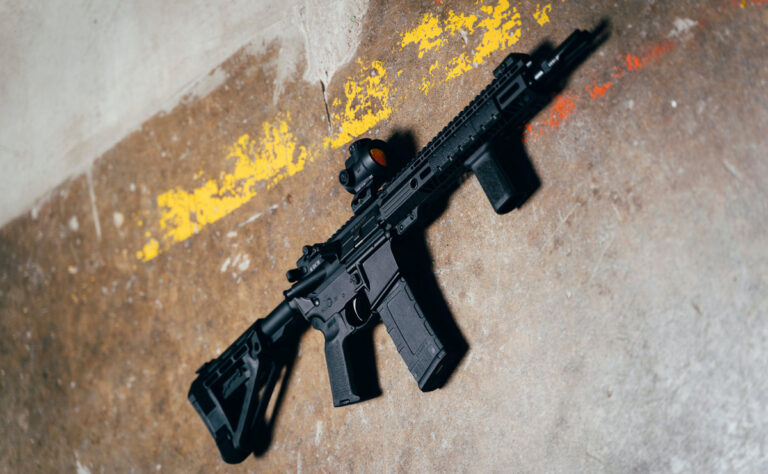North Carolina county plans to stock AR-15 rifles in schools to stop mass shootings
A North Carolina sheriff’s office hopes equipping schools with highly powered AR-15-style rifles will help stop mass shootings in the future. Introduced as a response to the Uvalde massacre that took the lives of 19 students and two teachers, the “enhanced security measure” is set to be implemented in all six schools in Madison County when they reopen later this month.
“Every day you turn on the TV and somebody’s been shot, somebody’s been stabbed, somebody’s been murdered, raped,” Sheriff Buddy Harwood said in a Facebook video. “We live in Western North Carolina, a rural county, but we’ve got to be prepared even in our rural counties, for the enemy when he tries to come in and destroy our children.”
Madison County schools and the sheriff’s office cited the deadly Uvalde shooting behind the collaboration as the tragedy “revealed systemic failures and poor decision-making, with responding police disregarding active-shooter trainings,” according to a Texas state house report.
“Those officers were in that building for so long, and that suspect was able to infiltrate that building and injure and kill so many kids,” Harwood told the Asheville Citizen-Times. “I just want to make sure my deputies are prepared in the event that happens.” As noted by the publication, the assault rifles will be stored on campus in special gun safes alongside extra magazines with ammunition and breaching tools for barricaded doors.
“The reason we put the breaching tools in the safes is that in the event we have someone barricaded in a door, we won’t have to wait on the fire department to get there,” Harwood continued. “I do not want to have to run back out to the car to grab an AR, because that’s time lost. Hopefully, we’ll never need it, but I want my guys to be as prepared as [they] can be.”
The county is also set to deploy a police school resource officer (SRO) and install a panic button system that reports to the monitoring centre and the sheriff’s office in each building. The system additionally sports a school safety liaison with social workers and school counsellors assigned to each of the educational institutions.
While some local residents have reportedly helped fund the new programme, not everyone agrees with the decision to put the rifles anywhere near school grounds—given how they’re the very same weapon used in numerous mass killings in recent years.
“It’s called hardening of the schools,” professor Dorothy Espelage, who studies education at the University of North Carolina, told WLOS. “What’s going to happen is we’re going to have accidents with these guns. Just the presence of an SRO increases violence in the schools.”
According to Allison Anderman, senior counsel and director of local policy at the Giffords Law Center to Prevent Gun Violence, the response to the US’ “unique epidemic of gun violence” is “horrific.”
“Where there are more guns, there is more gun violence,” the expert told USA Today, adding how efforts to bring more weapons into schools for gun violence prevention distract from the real issue at hand. “We need to make it much harder for people who are intent on doing harm and committing violence to access guns in the first place.”
Anderman went on to explain how students in the district are “much more likely” to be killed by guns from acts of domestic violence, interpersonal community violence, suicide or accidental shootings. “Those are the real risks that guns pose to students on a daily basis,” she mentioned. “If they want to make their students safer, they should be advocating for the solutions that we know work, like expanded background checks, extreme-risk protection order laws, waiting periods, safe storage, etc.”
Meanwhile, Harwood outlined that while the optics of SROs handling AR-15s in schools may be discomforting to some, it’s a necessary response—given the state of the country.
“I hate that we’ve come to a place in our nation where I’ve got to put a safe in our schools, and lock that safe up for my deputies to be able to acquire an AR-15,” he told the Asheville Citizen-Times. “But, we can shut it off and say it won’t happen in Madison County, but we never know. I want the parents of Madison County to know we’re going to take every measure necessary to ensure our kids are safe in this school system. If my parents, as a whole, want me to stand at that door with that AR strapped around that officer’s neck, then I’m going to do whatever my parents want as a whole to keep our kids safe.”
In June 2022, Ohio introduced new laws that made it more accessible for school staff, including teachers and bus drivers, to carry guns in the state after just 24 hours of training—a provision that’s also been criticised by several law enforcement groups.





